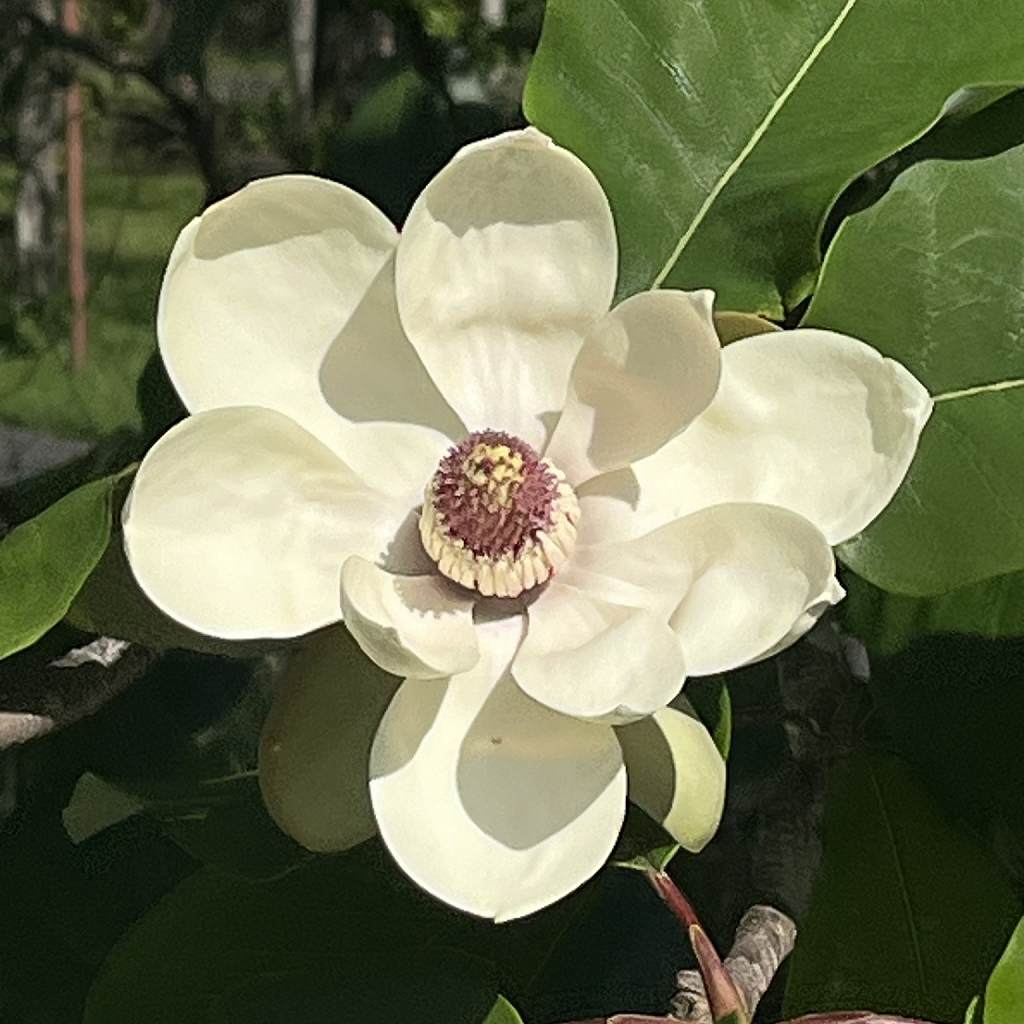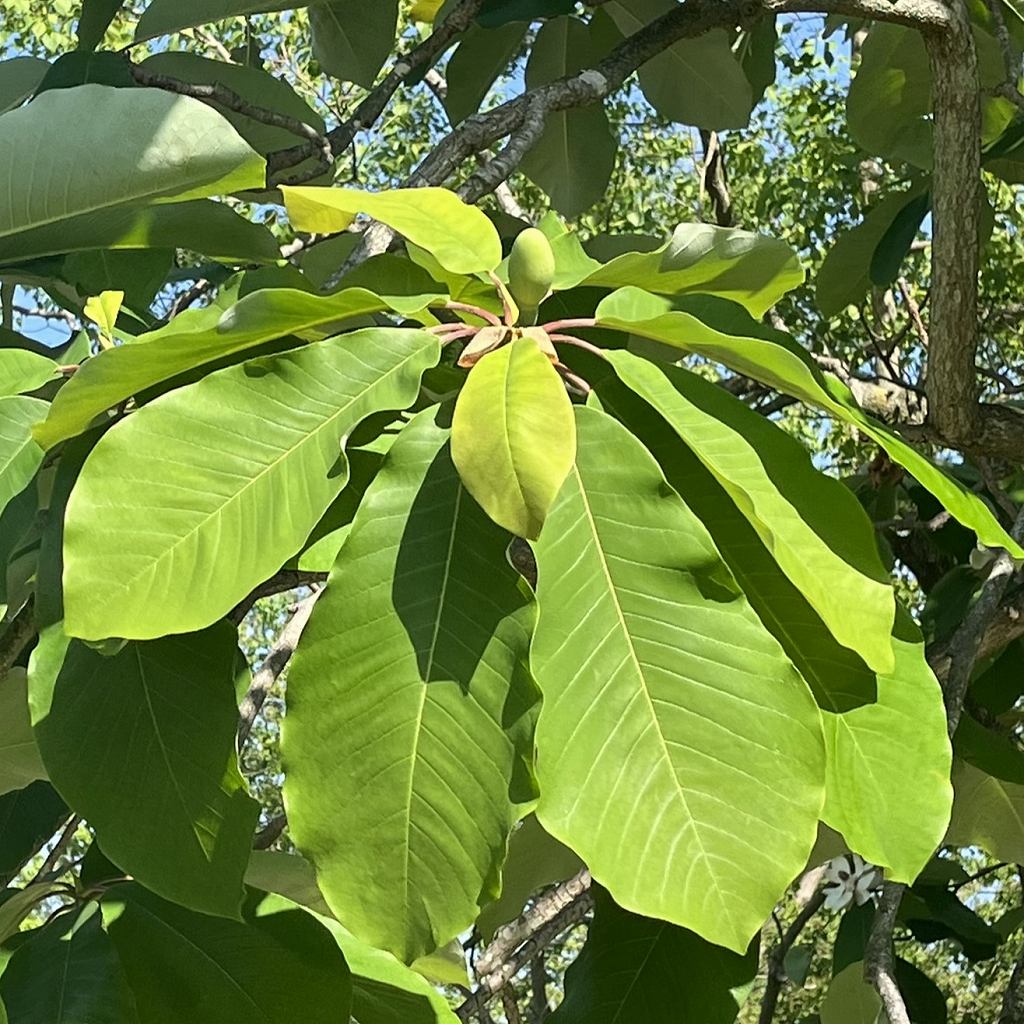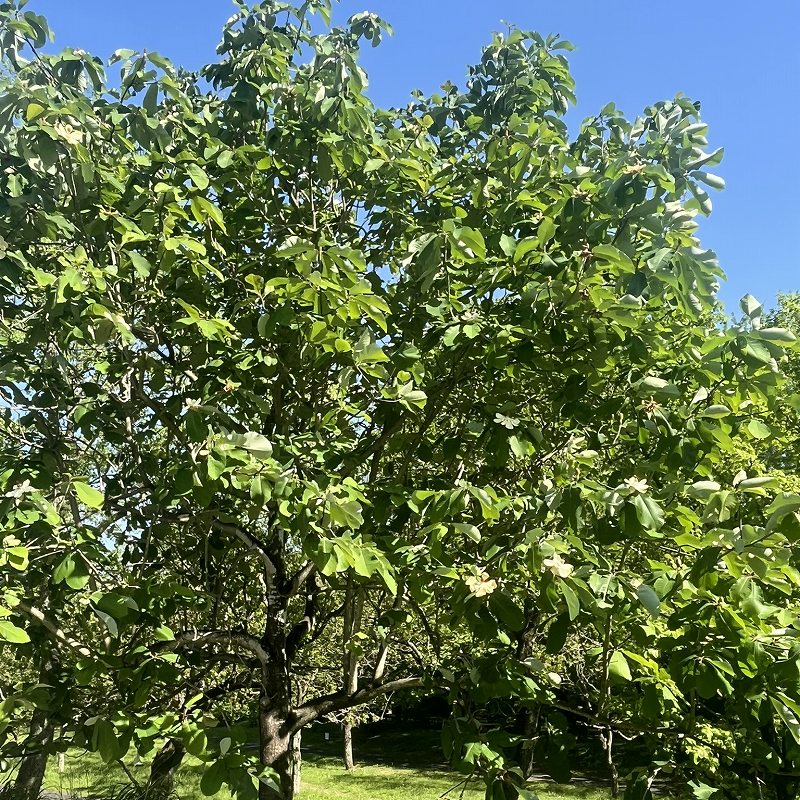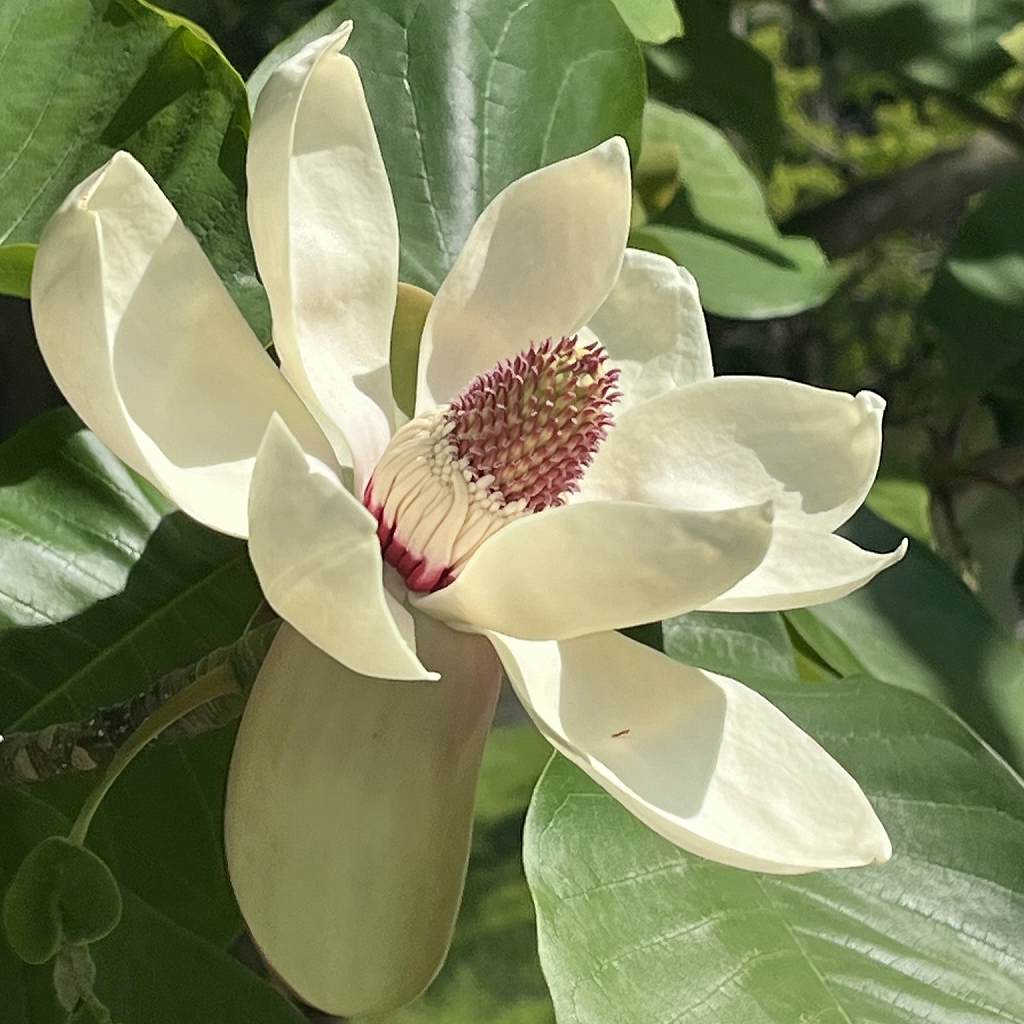ホオノキは日本在来。丈が高く、幹が太く、樹姿が整然としています。葉は大きな倒卵形。花は枝先で上を向いて咲き、強い芳香を放ちます。
Japanese Big Leaf Magnolia is a native species of Japan. It is tall, has a thick trunk, and has a neat tree shape. The leaves are large and obovate. The flowers bloom at the ends of the branches facing upwards and give off a strong fragrance.
【仮名】ホオノキ, ホオガシワ
【和名】朴の木, 朴柏
【英名】Japanese Big Leaf Magnolia, Japanese Whitebark Magnolia
【学名】Magnolia obovata
【誕生】06/ 21, 06/ 28
【開花】05, 06月
【花色】White
ホオノキ
ホオノキの概要

ホオノキはモクレン科の落葉高木。日本では北海道から九州まで、国外では中国北部に分布しています。山地や丘陵の肥沃なところで自生し、公園や庭園でも植栽。丈が高く、幹が太く、樹姿が整然としています。葉は大きな倒卵形。花は枝先で上を向いて咲き、強い芳香を放ちます。
ホオノキの名前

ホオノキの朴は「包」の転化。葉で食べものを包んだからです。別名ホオガシワの柏も食べものを盛りつける「炊葉」の転化。ラテン語の属名マグノリアは17~18世紀のフランスの植物学者ピエール・マニョルへの献名です。種小名オボヴァータは「倒卵形」という意味で、葉に由来。
ホオノキの姿形

ホオノキの樹皮は若木が白色、老木が褐色です。葉は枝先で輪生のような互生。葉の裏は軟毛が密生し、白色を帯びます。花は萼片が3枚、花弁が6~9枚、雄しべも雌しべも螺旋状。雌性先熟で同花受粉を避けます。花後は袋状の集合果を形成。熟すと赤色の種子が垂れ下がります。
ホオノキの近縁

ホオノキの近縁種「泰山木」は同じように葉の大きな高木。花も枝先で上を向いて咲きます。肉厚の花弁が6枚、萼片が3枚、雄しべも雌しべも螺旋状。爽やかで華やかな芳香を漂わせます。一方、原産地は北米で、日本へは明治時代の初期に渡来。葉に光沢と厚みのある常緑樹です。
ホオノキの利用

ホオノキの葉は大きく、芳香があり、静菌作用もあるため、食べものの盛り付けや保存に用いられます。樹皮には様々な精油成分が含まれ、生薬「厚朴」として鎮痛、咳止め、利尿、健胃に。木材は軽く、軟らかく、均質で狂いが少ないので、細工物や木型、食器などに用いられます。
Japanese Big Leaf Magnolia

Japanese Big Leaf Magnolia is a deciduous tree of the Magnoliaceae family. It is distributed in Japan from Hokkaido to Kyushu, and overseas to northern China. It grows naturally in fertile areas of mountains and hills, and is also planted in parks and gardens. It is tall, has a thick trunk, and has a neat tree shape. The leaves are large and obovate. The flowers bloom at the ends of the branches facing upwards and give off a strong fragrance.
The Japanese name of Japanese Big Leaf Magnolia comes from the word “wrapping”, because the leaves are used to wrap food. Another name comes from the word “serving”, because the leaves are used to serve food. The Latin genus name Magnolia is a tribute to Pierre Magnol, a French botanist from the 17th and 18th centuries. The specific name obovata means “obovate” and is derived from the leaves.
The bark of Japanese Big Leaf Magnolia is white on young trees and brown on older trees. The leaves grow alternately at the ends of the branches. The undersides of the leaves are densely covered with soft hairs and are white in color. The flowers have three sepals and six to nine petals, and both the stamens and pistils are spiral-shaped. They are protogynous and avoid same-flower pollination. After flowering, they form a bag-shaped aggregate fruit. When ripe, red seeds hang down.
Magnolia grandiflora, a closely related species of Japanese Big Leaf Magnolia, is a tall tree with similarly large leaves. The flowers also bloom facing upwards at the ends of the branches. It has six fleshy petals and three sepals, and both the stamens and pistils are spiral. It gives off a fresh and gorgeous fragrance. It is native to North America and was introduced to Japan in the early Meiji period. It is an evergreen tree with glossy and thick leaves.
The leaves of the Japanese Big Leaf Magnolia are large, fragrant, and have bacteriostatic properties, so they are used to serve and preserve food. The bark contains various essential oil components and is used as a herbal medicine for pain relief, cough suppressant, diuretic, and stomachic purposes. The wood is light, soft, uniform, and does not warp much, so it is used for crafts, wooden molds, tableware, etc.


